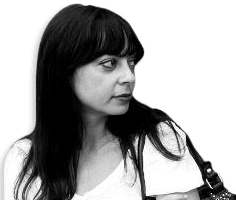It's been six years sincedissident Iranian Grand Ayatollah Hossein Ali Montazeri passed away.
Montazeri, one of the architects of the Islamic republic who turned into one of its fiercest critics, died of natural causes in December 2009 at the age of 87. But apparently he's still capable of making Iran's state apparatus nervous.
Iranian state-controlled television airbrushed Montazeri, who spent several years under house arrest, from an October 25 report showing a 1984 Friday Prayers speech by Supreme Leader Ayatollah Khamenei.
In the original, unedited video of the speech, a picture of Montazeri hangs next to an image of the Islamic republic's founder, Ayatollah Ruhollah Khomeini.
But in the footage of the speech aired in the recent state television report, Montazeri's portrait has been erased.
At the time of the speech, Montazeri was seen as Khomeini's potential heir. But his outspoken views and criticism of human rights abuses resulted in his persecution and house arrest.
In 2009, Montazeri became known as the spiritual father of the opposition movement that protested the disputed reelection of then-President Mahmud Ahmadinejad. Montazeri blasted the postelection abuses and expressed support for the protest movement.
Some Iranian news sites and social-media users highlighted state TV's censorship of Montazeri's image, posting before-and-after images demonstrating the airbrushing.
Last year, the editor in chief of the pro-reform Iranian daily newspaper Ruzan said the prosecutor's decision to suspend the publication was likely related to a December 20 edition featuring a front-page story about Montazeri.
Iran's state television, a major source of news and information for many in the country, is known for its censorship practices and propaganda.
Earlier this month, the website of Iran's former president, Akbar Hashemi Rafsanjani, accused state television of editing Rafsanjani out of a video of a meeting to commemorate Iranians killed last month in the hajj stampede in Saudi Arabia.
Iranian media had reported that senior officials, including Rafsanjani, who heads the Expediency Council, attended the October 5 meeting. The council's website posted pictures of Rafsanjani sitting next to Khamenei at the event.
Rafsanjani also appeared in at least one picture of the ceremony posted on Khamenei's website.
But Rafsanjani's website said that state television had "skillfully" censored footage of the event in its news bulletins "so that no viewer could tell that the head of the Expediency Council was also present at the ceremony."
Rafsanjani angered hard-liners after he criticized the 2009 postelection crackdown. His website was temporarily blocked in 2011.






